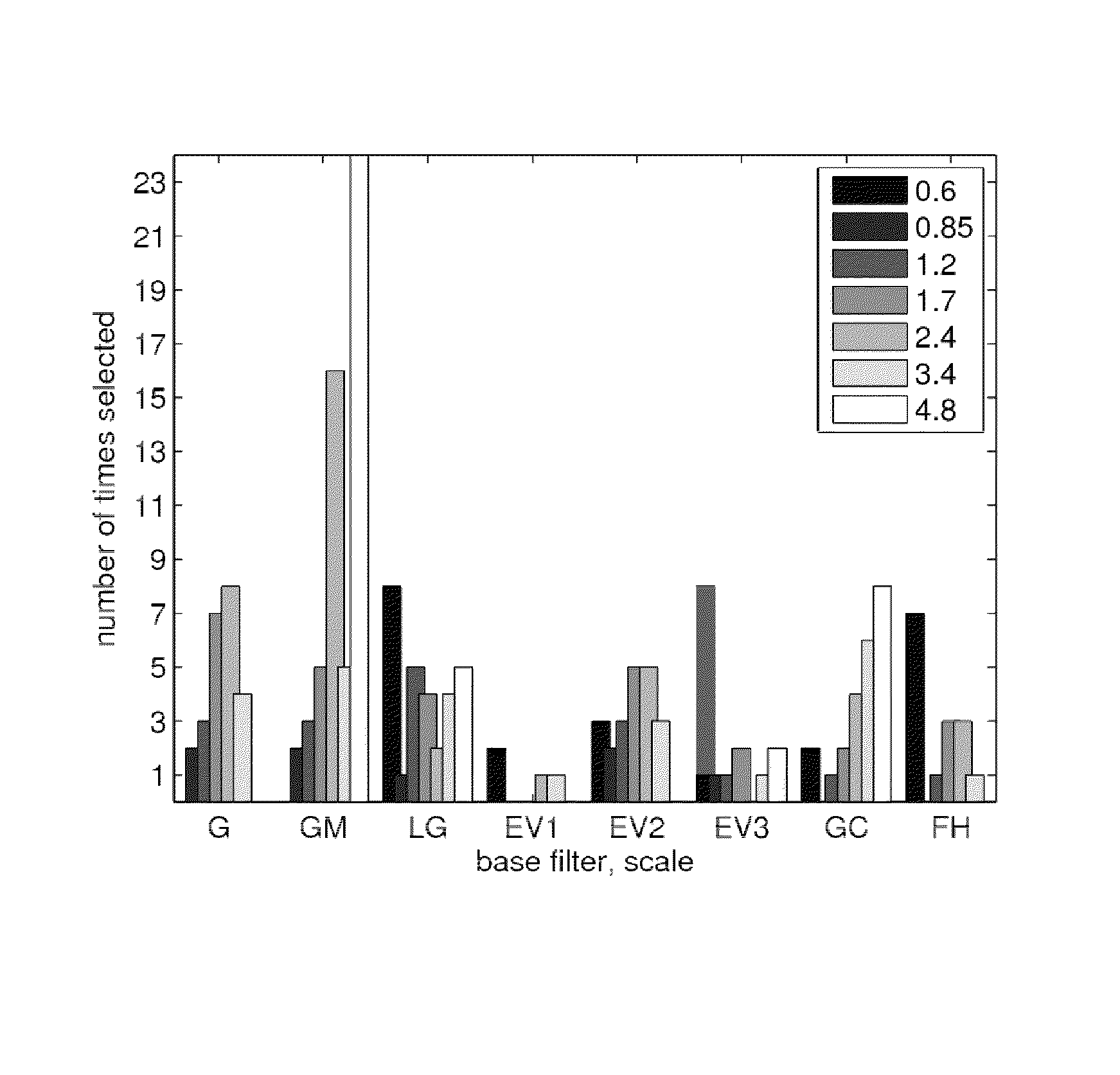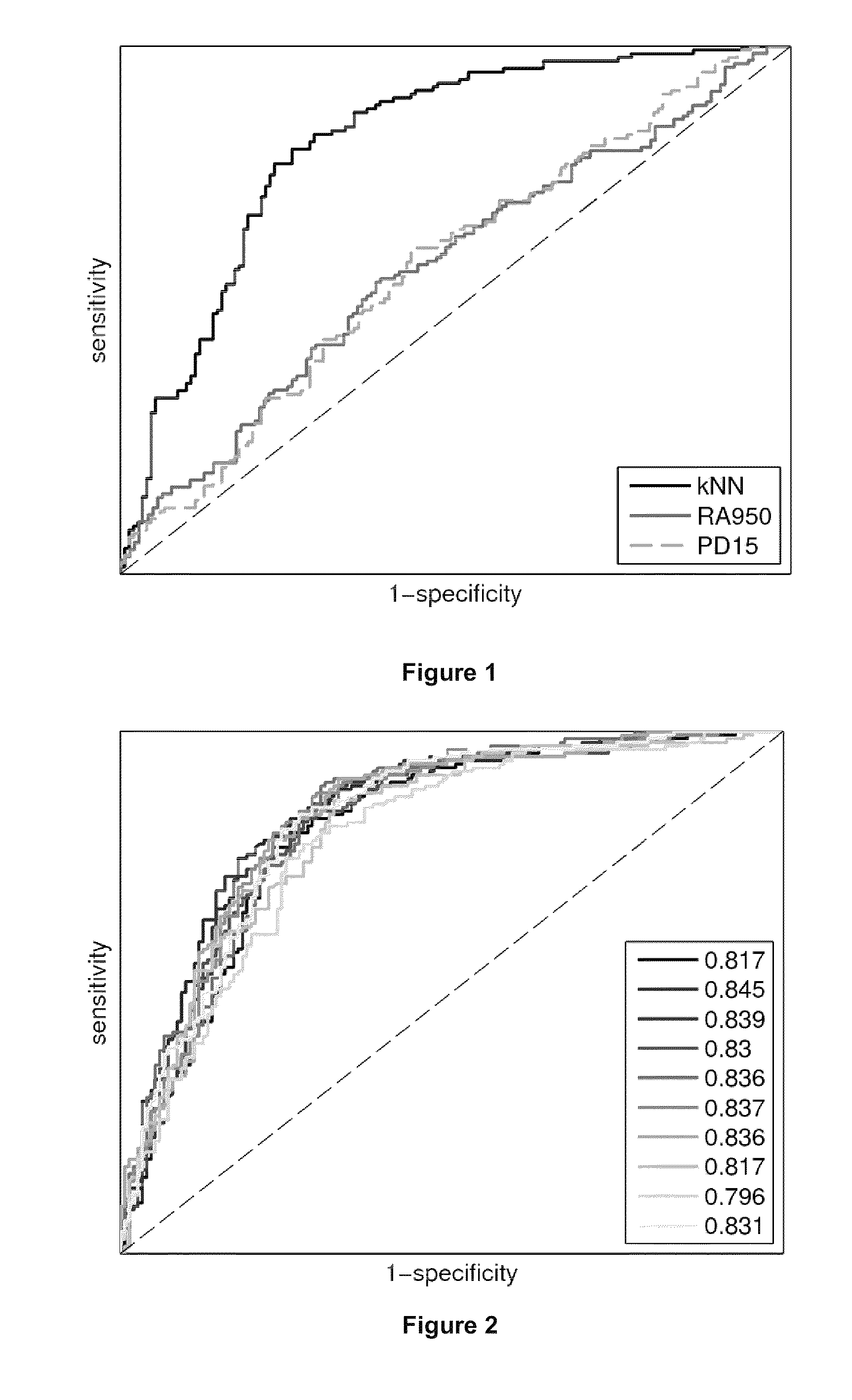Classification of medical diagnostic images
a medical diagnostic and image technology, applied in image data processing, character and pattern recognition, instruments, etc., can solve the problems of subjective visual assessment, time-consuming, and difficult visual assessment of disease severity and progression
- Summary
- Abstract
- Description
- Claims
- Application Information
AI Technical Summary
Benefits of technology
Problems solved by technology
Method used
Image
Examples
Embodiment Construction
[0012]The present invention provides a method for the computerised classification of a medical diagnostic image of a lung or of a part of a lung, comprising applying to said image a trained statistical classifier which has been trained by supervised learning on a training set of methodologically similar lung images each of which images has been labelled by metadata indicative of the likelihood of the respective image relating to a lung characterised by a lung disease, or the degree of such disease, or propensity to develop such disease, wherein in said training of the classifier, for each image in the training set a number of regions of interest (ROIs) were defined, and textural information relating to the intensities of locations within each ROI was obtained, and combinations of features of said textural information were found which suitably classify said training set images according to said metadata,
[0013]and wherein, in applying said trained statistical classifier to said image,...
PUM
 Login to View More
Login to View More Abstract
Description
Claims
Application Information
 Login to View More
Login to View More - R&D
- Intellectual Property
- Life Sciences
- Materials
- Tech Scout
- Unparalleled Data Quality
- Higher Quality Content
- 60% Fewer Hallucinations
Browse by: Latest US Patents, China's latest patents, Technical Efficacy Thesaurus, Application Domain, Technology Topic, Popular Technical Reports.
© 2025 PatSnap. All rights reserved.Legal|Privacy policy|Modern Slavery Act Transparency Statement|Sitemap|About US| Contact US: help@patsnap.com



